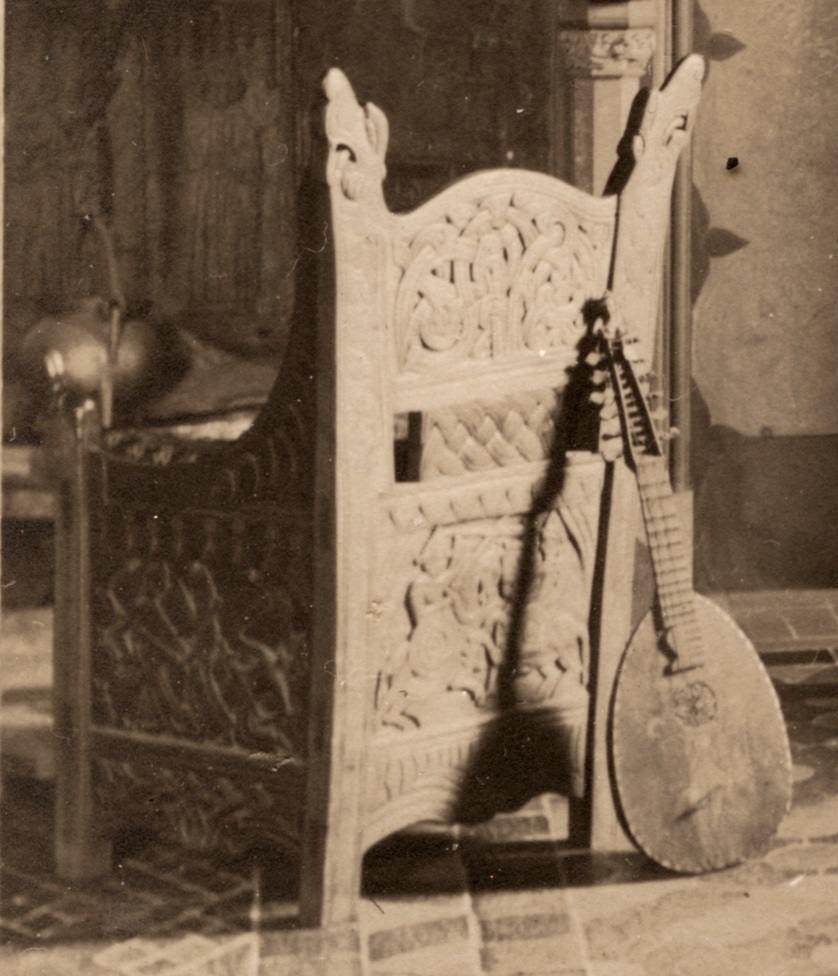The recently announced works on the edition of the inventory of the military collection from the pre-war resources of the Malbork Castle are currently at the review stage. This means that the main part of the work on the new publication has been completed, which already allows for the formulation of general observations (see D.Gosk and A. Masłowski) and detailed descriptions of selected items that were in the castle in Malbork until 1945.
One of the most interesting monuments about which we know more and more importantly, we know that it is in Polish public collections, is a historical musical instrument, once part of the collection of Joseph Theodor Blell.
It is situated in section D, the list of his collections, with the wording: Decorative and functional items of European peoples from the end of the Iron Age to today, in the subsection: a. Musical instruments, under numbers 1623 and 1624:
“2 mandolins with a straight string, one of which is very decorative by Goldberg from Gdańsk 1754”.
Thanks to the name of the violin maker in the inventory and the photographic recordings in the Annals of the Castle Reconstruction (Marienburg Baujahr), we can be absolutely sure that the instrument mentioned in the source is the same as the lute zither from 1730, kept today at the Museum of Musical Instruments in Poznań (inv. No. MNP I 224).
Johann Goldberg (circa July 1701 Orunia – buried on April 15, 1765 Gdańsk), was listed in Gdańsk from around 1720 and was granted city rights on May 18, 1726. He built lutes, violins, violas and cellos. He was famous not only for his perfectly crafted instruments, but also for his musically gifted offspring. His son, composer and harpsichordist, was commemorated by Johann Sebastian Bach, who dedicated his Goldberg Variations to him.
The discussed work of the Gdańsk luthier is signed with a handwritten note placed inside the body, reading: Johann Gollberg, Lauten / u. Geigenmacher in Dantzig / Anno 1730.
The inconsistency of the date record from the reference number and the inventory should be explained by a mistake when making the inventory. The analysis of the preserved photographs leaves no room for uncertainty as to whether the Poznań lute is a different, older than Malbork one, made by Goldberg. Participants in the process of reconstructing and equipping the castle in Malbork must have had a deep sense of the value and uniqueness of this instrument, because it appears several times as a prop complementing the photographic composition, like no other object collected in the castle.
So far, no attempts have been made to study the provenance of this instrument. Several years ago it was exhibited at the temporary exhibition entitled Hear the picture. Music in European art from the 15th to the beginning of the 20th century, organized by the National Museum in Gdańsk, the city where the instrument was created and from which it was most likely acquired by Blell for the collection. The catalog of the exhibition includes an illustrated slogan for Goldberg’s zither, in which the issue of its origin and history was not discussed before it was placed in the collection of the National Museum in Poznań, for the simple reason that the source discussed and developed by us was not introduced into the scientific circulation.
(compiled by B. Butryn)


